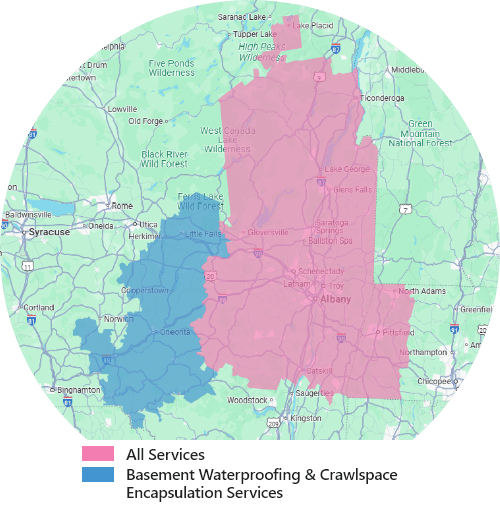Wastewater Treatment Plant Upgrades
Challenge
Proposed upgrades at the wastewater treatment plant included the construction of a new blower building with enclosed heavy equipment; i.e., two blowers and a generator. A geotechnical investigation at the site identified relatively weak soil conditions in the area of the proposed blower building. The test borings encountered about three feet of moderately compacted fill soils over soft to medium stiff silt and clay with sand layers over hard shale bedrock at a depth of about 22 feet. Groundwater was observed at a depth of about four feet. The blower building was positioned on the site adjacent to recently constructed large aeration basins with floor elevations at or below the bedrock surface. With the expansive excavation needed for the aeration basins, the soils within the footprint of the blower building were also reportedly excavated down to bedrock and the entire area backfilled with clean, 1 ½-inch minus crushed stone. Even with this extensive excavation and backfilling operation, there was still concern about whether the crushed stone fill could support the heavy equipment without excessive settlement.
Solution
Helical piles were selected to support the equipment foundations due to the relatively low (mobilization) costs compared to other deep foundation alternatives. The smaller installation equipment could also access and maneuver more easily within the congested construction site. Helical piles do not require pre-drilling or concrete encasement, so the high groundwater and potential caving-in of the granular fill were nonissues. The foundation design included fourteen helical piles, six piles for the generator foundation and four piles for each of two blower foundations. The helical piles were designed for a service load of 10 tons. The helical pile configuration consisted of 2 7/8-inch OD by 0.276-inch wall hollow round shaft with 10-inch diameter single-helix leads. The 45-degree miter cut at the tip of the lead was cut off and the piles were advanced so the pile shaft would bear directly on the bedrock surface. The engineer’s representative was on site to document and approve the pile installation. From start to finish, the pile installation and all related prep and finish work were completed in less than eight hours.
Project Summary
Geotechnical Engineer: Engineering Science & Subsurface Exploration, P.C.
Structural Engineer: Delaware Engineering, P.C.
Certified Pile Installer: Adirondack Basement Systems
Products Installed: (14) Foundation Supportworks™ Model 288 Helical Piles, 10” Lead Section, Installed to depths of 20 to 22 feet, 10 ton (20 kip) Design Load






